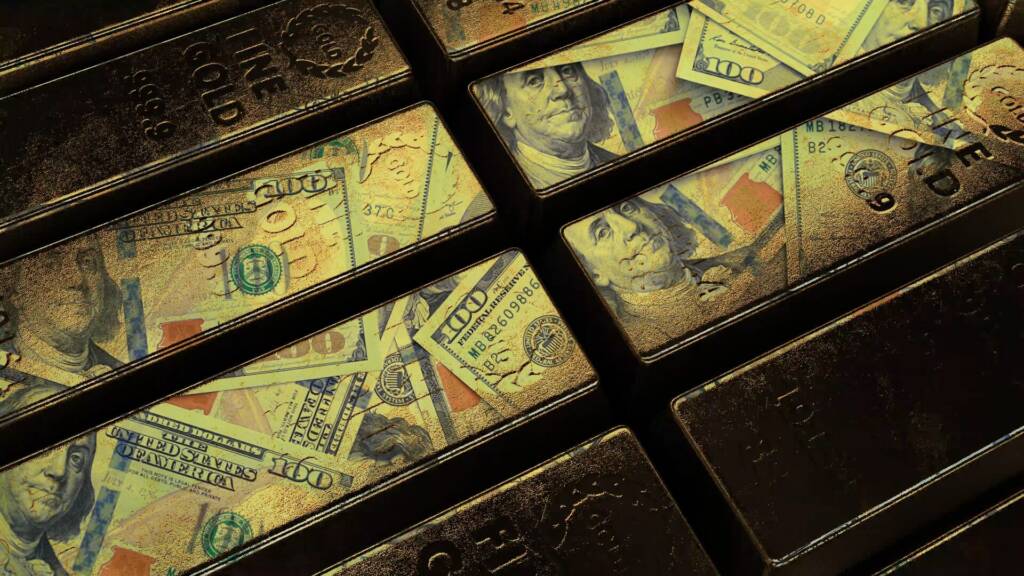The move from a gold-backed to a fiat currency system marked a period of significant instability, highlighting a strategic pivot towards a dollar-dominant economy. Jelle Zijlstra’s reflections on this era underscore the profound impact of these developments, as gold lost its role as the anchor of monetary stability, illustrating a significant transformation in global financial policies and practices.
Gold, even when marginalized, silently monitored the fiat currency system, with its price increases signaling the dollar’s weakening, notably after the 1970s gold window closure. The U.S. government, recognizing gold’s threat to the dollar, actively managed its perception, a sentiment reflected in Fed Chairman Paul Volcker’s view of gold as an adversary.
The introduction of ‘paper’ gold in the 1980s, starting with gold futures trading in 1974, marked a significant change in gold trading, allowing for the sale of gold claims without physical backing. This facilitated speculative trading, likened to an economic exchange where commitments were nominal. This led to the fractional-reserve paper gold scheme, where paper gold greatly outnumbers physical gold, estimated at $200-300 trillion versus $11 trillion in physical assets. The Comex market’s move towards paper transactions reflects this transition.
The emergence of gold derivatives was crucial in meeting the demand that would have traditionally sought physical gold, creating an imbalance between the finite supply of physical gold and the unlimited potential for derivative issuance. This shift has significantly impacted the gold market, enabling price control during monetary expansion and affecting gold’s role in financial systems amidst inflationary trends.
This transformation has significantly reduced gold’s efficacy in curbing expansionary monetary policies, enhancing the dollar’s credibility. Investment flows, especially from Western institutional investors, now more than physical demand, influence gold prices. These investors’ decisions, often reacting to real U.S. interest rates, highlight gold’s role as an inflation hedge.
A noticeable trade pattern has emerged between Western investors and Eastern consumers, with gold moving from East to West in bull markets and the reverse in bear markets. This dynamic emphasizes Western capital’s role in setting gold prices and the differing motivations between Western and Eastern market participants.
The year 2022 disrupted traditional gold market dynamics, driven by geopolitical tensions and the U.S. freezing Russian central bank assets. This led to a breakdown in the correlation between U.S. real interest rates and gold prices, with gold showing resilience and even increasing in value despite rising rates.
During this period, Western institutional investors became net sellers, indicated by reduced inventories in ETFs and Comex. Yet, gold prices rose, driven by significant physical gold purchases by central banks, huge demands from India and increased demand from China, challenging the traditional investment logic tied to interest rates.
Central bank activity, particularly from the Reserve Bank of India and People’s Bank of China, alongside rising private sector demand in India followed by China, shifted the gold demand center from West to East. This shift represents a profound change in global gold market dynamics, with central banks purchasing record amounts of gold in recent years, underscoring a strategic move towards physical gold accumulation amid a changing economic landscape.
The gold market’s shift towards physical demand, driven by central bank acquisitions, especially by the RBI of India and People’s Bank of China and Russia, marks a move away from speculative trades towards significant real gold transfers from West to East. This shift, as Jan Nieuwenhuijs suggests, indicates a “hidden dedollarization,” spurred by the strategic use of the dollar and the U.S. debt crisis, potentially leading to lower interest rates to manage debt at the expense of the dollar’s value.
This trend poses risks for those with substantial dollar investments, propelling a gold-buying wave, particularly in BRICS nations led by India, and signaling gold’s return as a key financial system asset. It reflects a profound underestimation by Western investors of gold’s strategic realignment, a misjudgment highlighting a major shift in global financial dynamics. This movement of gold from West to East not only represents a wealth transfer but also symbolizes the West’s failure to grasp the scale of these changes, underscoring a significant shift in the global financial landscape.
